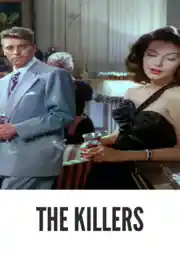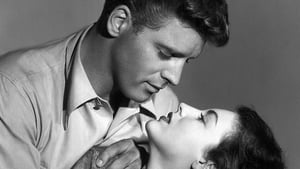Contact: [email protected]
Video Sources 0 Views

Synopsis
[ez-toc]




Introduction
In the ever-evolving landscape of cinema, the quest to preserve and revitalize old movies has become a paramount endeavor. One intriguing facet of this effort lies in the colorization of classic black and white films, a process that not only breathes new life into cinematic gems but also introduces them to a contemporary audience. In this article, we delve into the mesmerizing world of The Killers Colorized (1946), a film noir masterpiece, recently reimagined in color. Through the lens of technological advancements, artistic choices, and performances, we explore the nuanced impact of colorization on this iconic piece of cinematic history.
Read Media File Transfer Agreement: Terms and Conditions
Read FAQ
The Evolution of Film Colorization
The practice of colorizing old movies is a fascinating journey that spans decades. Initially introduced in the 1980s, colorization aimed to make black and white films more appealing to modern audiences. The early attempts, however, faced criticism for their lack of subtlety and often inaccurate color choices. Over the years, technological advancements have transformed the process, allowing for greater precision and authenticity.
The advent of digital colorization has ushered in a new era, enabling filmmakers to meticulously recreate the color palette of the original era. This evolution has sparked a renewed interest in classic films, enticing viewers with a fresh and vibrant perspective on the timeless stories that shaped cinematic history.
Understanding Film Noir and Its Visual Aesthetic
Before delving into the colorized world of The Killers Colorized (1946), it’s crucial to grasp the essence of film noir. A genre known for its moody atmospheres, moral ambiguity, and shadowy cinematography, film noir has left an indelible mark on cinema. The use of black and white cinematography in classic film noirs, such as The Maltese Falcon (1941) and Double Indemnity (1944), contributes to the genre’s enigmatic allure.
The absence of color in film noir isn’t a limitation but a deliberate choice that enhances the visual storytelling. Shadows play a pivotal role in creating suspense and heightening emotions. The contrast between light and dark becomes a character in itself, shaping the narrative and deepening the psychological impact on the audience.
The Impact of Color on Narrative and Mood: Case Study of The Killers Colorized (1946)
Directed by Robert Siodmak, The Killers Colorized (1946) stands as a quintessential film noir, known for its gripping storyline and stark visual elements. The decision to colorize such a classic piece sparks intriguing questions about preserving the film’s original intent while introducing it to a modern audience.
In the colorized version of The Killers Colorized (1946), Siodmak’s creative choices take center stage. The vibrant hues accentuate the chiaroscuro lighting, heightening the emotional impact of each scene. The use of color symbolism becomes more pronounced, with reds signifying danger and blues evoking a sense of melancholy. The once monochromatic canvas is now a rich tapestry of emotions, inviting viewers to experience the film in a new light.
Specific scenes, such as the intense confrontation between Burt Lancaster’s Swede and the titular killers, gain a renewed intensity. The interplay of colors heightens the tension, making the characters’ emotions palpable. The colorized version doesn’t replace the original but offers a fresh perspective, allowing audiences to appreciate the film’s artistry through a contemporary lens.
Examining Performances: Colorizing the Characters in The Killers Colorized (1946)
The Killers Colorized (1946) boasts a stellar cast, with Burt Lancaster, Ava Gardner, and Edmond O’Brien delivering unforgettable performances. The colorization process adds a layer of complexity to these characters, breathing life into their personas.
Burt Lancaster’s portrayal of the doomed Swede is iconic, and the colorized version accentuates the nuances of his performance. The shadows on his face, now infused with subtle tones, amplify the internal conflict within the character. Ava Gardner’s ethereal beauty and the glamorous allure of her femme fatale character, Kitty Collins, are enhanced by the vibrant color palette. Edmond O’Brien’s portrayal of insurance investigator Jim Reardon gains depth as the colorized sets complement the intensity of his scenes.
Costume and set design, often overlooked in black and white films, become essential elements in the colorized version. The visual details contribute to the characters’ personalities and the overall atmosphere, creating a more immersive viewing experience.
Controversy and Debate: Colorization in the Film Industry
The practice of colorizing old films has been met with considerable controversy and debate within the film industry. Purists argue that colorization compromises the director’s original vision, diluting the artistic integrity of the work. On the other hand, proponents advocate for the commercial viability of colorized films, asserting that it opens classic movies to a broader audience.
The Killers Colorized (1946) in color embodies this debate. While purists may be apprehensive about altering a cinematic gem, the colorized version provides accessibility to those who might otherwise dismiss black and white films as outdated. Striking a balance between preserving the director’s intent and embracing technological innovations remains an ongoing challenge for the industry.
The Killers Colorized (1946): Appreciating Both Versions
Rather than pitting black and white against colorized films, it’s essential to appreciate both versions as unique cinematic experiences. The original black and white rendition of The Killers (1946) captures the essence of film noir in its purest form, with shadows and contrasts shaping the narrative.
On the other hand, the colorized version offers a contemporary lens through which audiences can rediscover the film. The vibrancy of color doesn’t erase the original’s significance but adds a layer of accessibility, inviting new generations to explore the magic of classic cinema.
Preservation Efforts and Future of Old Films
As technology advances, so do the methods of preserving classic films. Archival efforts and restoration technologies play a crucial role in ensuring that these cinematic treasures endure for future generations. Organizations dedicated to film preservation invest in cutting-edge technologies, such as AI-assisted restoration, to breathe new life into deteriorating prints and bring forgotten classics back to their original glory.
The Killers Colorized (1946) serves as a testament to the ongoing commitment to preserving cinematic history. Colorization, when executed thoughtfully, becomes a tool for not only restoration but also reimagining the past in a way that resonates with contemporary audiences.
Conclusion
In the realm of old films, The Killers (1946) in color stands as a bold experiment in preserving cinematic history while introducing classic gems to a new audience. The evolution of film colorization reflects the ever-changing landscape of technology and artistic interpretation. By appreciating both the original and colorized versions of films, we bridge the gap between the past and present, ensuring the continued relevance of cinematic masterpieces.
Embrace the allure of The Killers (1946) in its newly colorized format, and let it be a gateway to exploring other notable films that have undergone similar restoration efforts. In the fusion of old and new, the magic of cinema persists, inviting us to redisco












